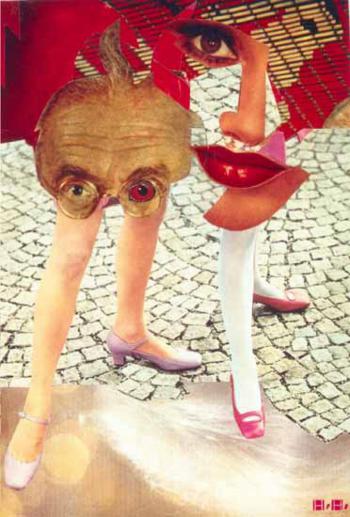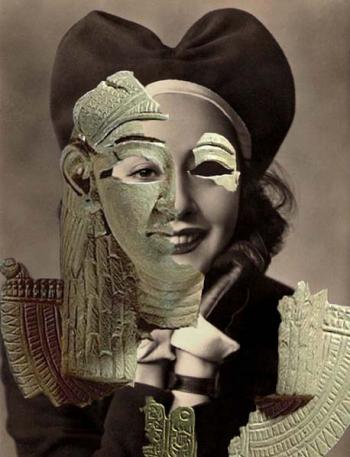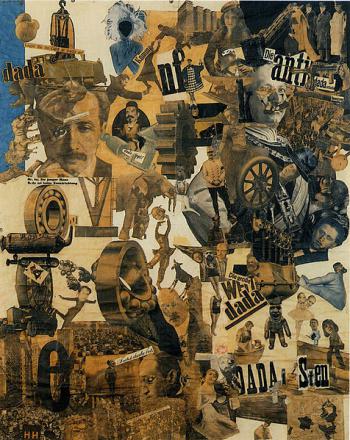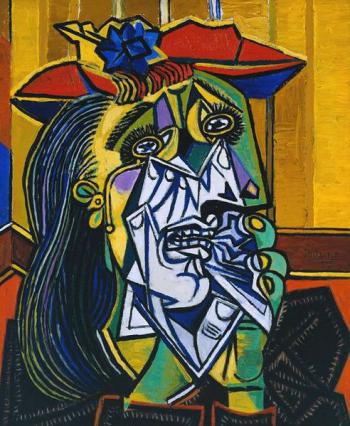Serendip is an independent site partnering with faculty at multiple colleges and universities around the world. Happy exploring!
Blogs

10 minutes of research 2: John Cage
John Cage's work is really important to me. In addition to introducing "chance operations" into his work, his Zen-influenced attitude towards making art and living in the world have inspired and emboldened a lot of my play in the worlds of theater and dance.
In this video, which is from a 1960 American TV show called "I'VE GOT A SECRET," American celebrities of the time play a game of trying to figure out what a "mystery guest's" secret is. So there's the American TV game to see (in all its hokey splendor), but also John Cage's compositon, which I find delightful for how seriously it takes play.
If this isn't embedded, visit it at http://www.youtube.com/watch?v=SSulycqZH-U

10 minutes of research 1: Henri Matisse
Flanagan describes Henri Matisse as a "traditional artist" and I want to register my disagreement. His painting so offended the mainstream critics of his day that they referred to it as "fauvism," the work of "wild animals." Although he used paint and canvas, his strategies for representation were wildly opposed to the impressionists, whose pretty canvases his playfully oppose.
Consider this painting of his wife and its play with color.
http://ayay.co.uk/background/paintings/henri_matisse/portrait-of-the-green-stripe/

Sophie Taeuber-Arp
Her collection:
http://www.moma.org/collection/artist.php?artist_id=5777
video:
http://www.youtube.com/watch?v=vvwFuwOdkzE
from wikipedia:
In 1915, at an exhibition at the Tanner Gallery, she met the Dada artist Jean Arp, with whom she was to collaborate on numerous joint projects until her death in 1943. They married in 1922 and she changed her last name to Taeuber-Arp.
...
During this period, she was involved in the Zürich Dada movement, which centered on the Cabaret Voltaire. She took part in Dada-inspired performances as a dancer, choreographer, and puppeteer; and she designed puppets, costumes, and sets for performances at the Cabaret Voltaire as well as for other Swiss and French theaters. At the opening of the Galerie Dada in 1917, she danced to poetry by Hugo Ball wearing a shamanic mask by Marcel Janco. A year later, she was a co-signer of the Zurich Dada Manifesto.

Hannah Hoch
Hannah Hoch was a German photocollage artist and part of Dada art movement in Europe. The Dada art movement was in responce to World Word I. During World War I Hoch wad a nurse with the Red Cross. Hoch was one of the orginators of photocollage art along with Raoul Hausmann. Her work mainly features women and machine parts.


New Games Movement

"Play Hard, Play Fair, Nobody Hurt." This is the central philosophy of New Games Movement. One of its founders was Stewart Brand, well known for being the editor of the Whole Earth Catalog. It started in the late 1960s and became popular a decade later. I found the principles of this movement fascinating, because one of them proposed that although play included competition, winning or losing in the end was not important. Also, the movement pursued to replace competitive sports with cooperative games. The game "Slaughter" would be a good example. In this game, people on the winning side were encouraged to change to the losing side, ensuring there were no winners or losers. This is a really interesting idea.

Some information about Dada
The word ‘Dada’ is strange for me. When I read it, the word seems meaningless and is onomatopoetic. After I read the article, I found some information about this movement. I’m interested in the link between art and the war. Artists who started Dada wanted to use this movement to express their feeling, their weariness and horror against the WW1. Those people worked against the main stream, because they thought the main stream thoughts reflected the ideas of persons who caused the war. The attitude was negative to everything. They gave up the logic, and wanted to destroy. The obvious person in the movement I noticed is Hannah Hoch, a German Dada artist. Actually at that time, many male members in the movement believed ‘paid lip service to women's emancipation’, it was not easy for her to take part in. In her work, she expressed not only the idea of Dada, but also the idea of feminism.



Innovating Pedagogy 2013: Seamless learning
The Innovating Pedagogy report is an annual overview of edutech from the Institute of Educational Technology at the Open University. The 2013 report, the second in the series, selects 10 emerging innovations from the long list of existing technologies which the institute believes have the potential to make a significant impact on education. These are not technologies which are in development or even new, but rather technologies and ideas which are already being effected but have room to expand. The report ranks each innovation in terms of potential impact and timescale for implementation, describes its current application, and then explains the pedagogy behind the innovation and how it could be re-envisioned for maximum impact. The fourth innovation which the report discusses is the growing phenomenon of seamless learning.
Potential impact: medium/high
Timescale: medium (2-5 years)

Surrealism - The How of Why
 Surrealism and impressionism are my two favorite art movements to date. Whilst on my grad trip to London with my best friend, I saw one of Picasso's Weeping Woman pieces in the flesh (or canvas). Up close, you could feel her sorrow without knowing where her sorrow stems from. I believe this is achieved through the jagged edges and the dichotomy of the black/white portion and the rich color around it. It is both beautiful and emotionally raw.
Surrealism and impressionism are my two favorite art movements to date. Whilst on my grad trip to London with my best friend, I saw one of Picasso's Weeping Woman pieces in the flesh (or canvas). Up close, you could feel her sorrow without knowing where her sorrow stems from. I believe this is achieved through the jagged edges and the dichotomy of the black/white portion and the rich color around it. It is both beautiful and emotionally raw.
Surrealism grew in out of the Dada (or anti-art) movement during World War I. Interestingly, Sigmund Freud helped foster the movement whilst studying patients suffering from shell-shock. André Breton worked with Freud and was fascinated with his dream analysis and the concept of liberating the imagination. In dreams, we unconsciously and randomly mix events, thoughts, voices, etc. that we've seen throughout the day. Our brain tries to make sense of them by making a story out of them. Breton loved this idea, and so did his followers: Juxtaposing things that normally might not have anything to do with each other, and then trying to find a meaning to it.
Breton and his followers created the Surrealist Manifesto in 1924 and the movement took off. It melted into other areas of culture, such as political thought and social theory. While the heyday of surrealism was in the 1930's, the movement is still evolving.

Innovating Pedagogy 2013: Learning analytics
The Innovating Pedagogy report is an annual overview of edutech from the Institute of Educational Technology at the Open University. The 2013 report, the second in the series, selects 10 emerging innovations from the long list of existing technologies which the institute believes have the potential to make a significant impact on education. These are not technologies which are in development or even new, but rather technologies and ideas which are already being effected but have room to expand. The report ranks each innovation in terms of potential impact and timescale for implementation, describes its current application, and then explains the pedagogy behind the innovation and how it could be re-envisioned for maximum impact. One of the innovations they review is the use of learning analytics.
Potential impact: medium/high
Timescale: medium (2-5 years)

Waking Life Movie Quote
"I had a friend once who told me that the worst mistake that you can make is to think you are alive, when you're really asleep in life's waiting room. The trick is to combine your waking rational abilities with the infinite possibilities of your dreams. 'Cause if you can do that you can do anything."


